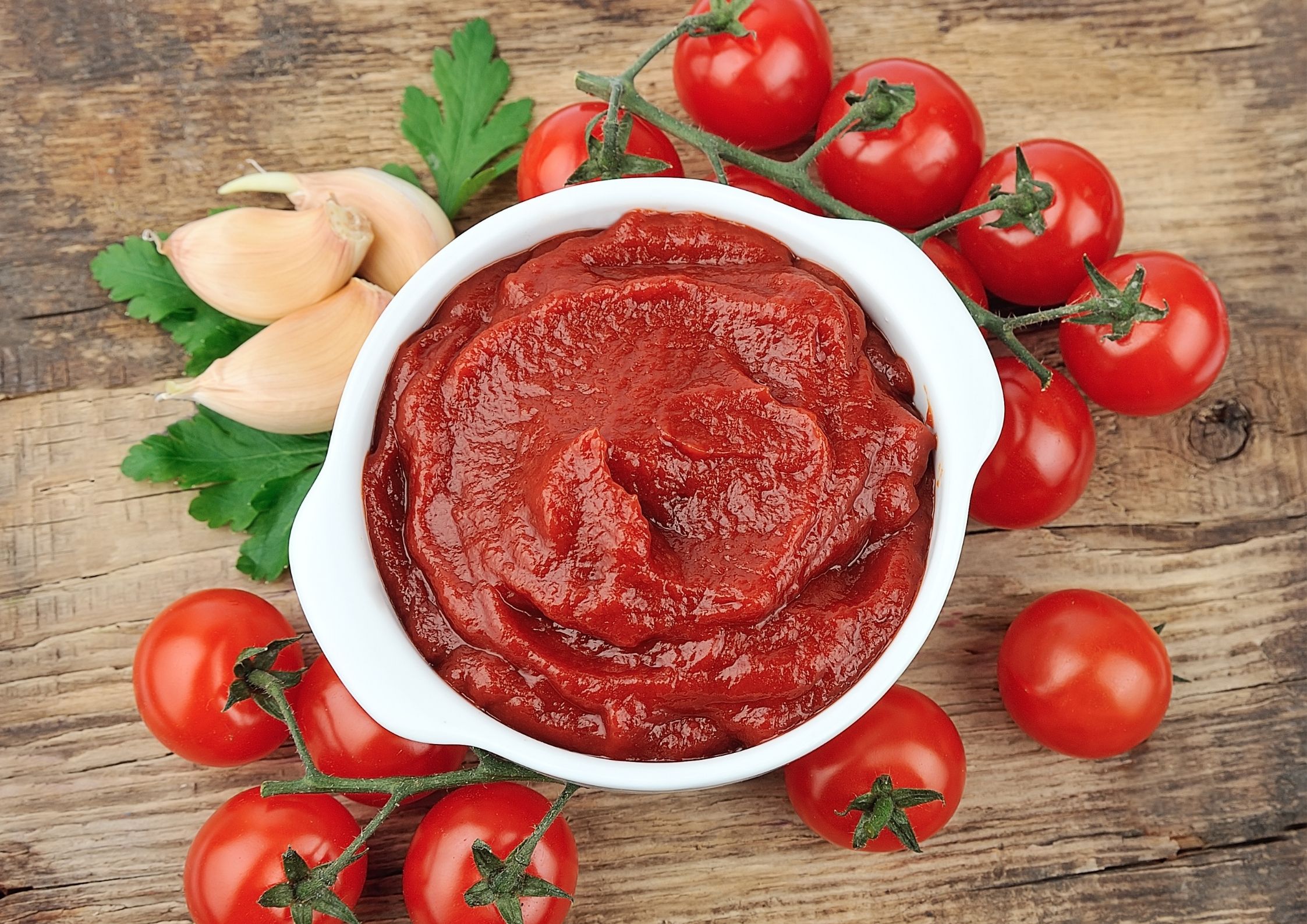Tomato Paste is one of the most utilized ingredients in my recipes. So when I’m out of tomato paste, I need to have a list of substitutes in hand.
I have experimented with different tomato paste substitutes that can effortlessly replace tomato paste. And in this article, I am writing down the ones that work best in my recipes.
Today I’ll talk about some Tomato-based substitutes like Fresh Tomato, Tomato Sauce, and Tomato puree and Non-tomato-based tomato substitutes like Red Bell Pepper, Cornstarch & Red Wine, Pumpkin Puree, and Soy Sauce.
Keep reading to know how you can swap these ingredients and still get a similar flavor profile in your recipe!
Table of Contents
What is Tomato Paste?
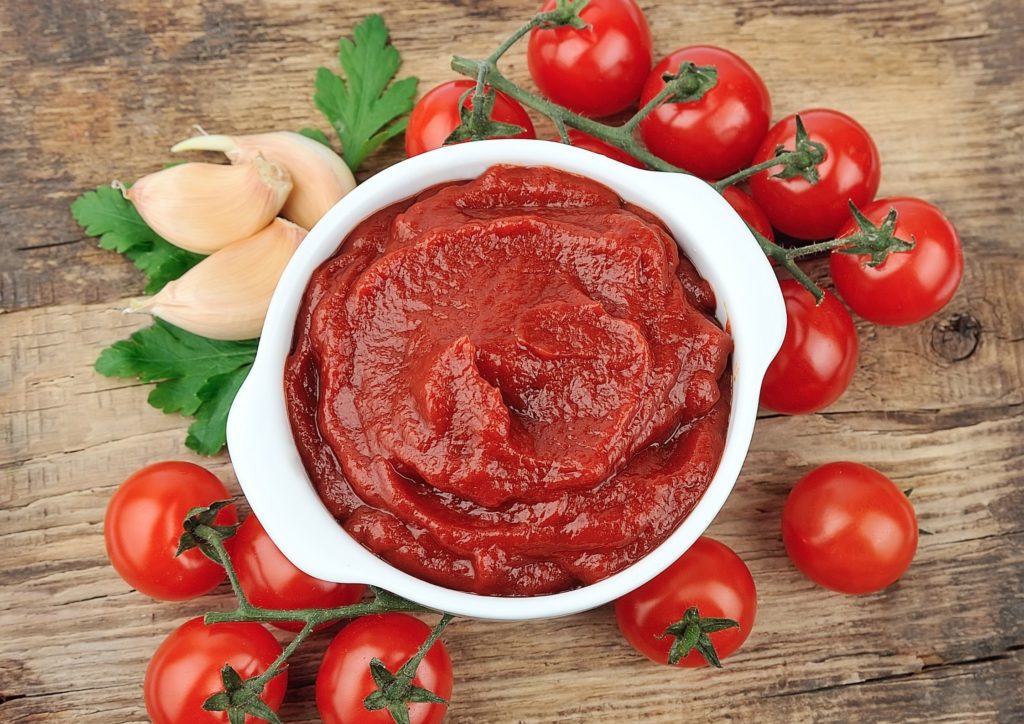
Tomato paste has a dense and smooth consistency than most other tomato products like tomato sauce or tomato puree. To make a perfect tomato paste, you have to cook the tomatoes twice.
First, take fresh tomatoes and cook them until you can remove the skin and stain the seeds. Afterward, cook them again to get rid of the watery content. Continue simmering until you get a dense pastelike texture.
You can either make tomato paste at home or buy readymade canned tomato paste from the store. While using it in a dish, you have to remember that it is a concentrated form, so use a smaller amount than tomato sauce or juice.
7 Tomato Paste Substitute
Let’s kick off the list with my favorite tomato-based substitutes for tomato paste for original flavoring.
1. Fresh Tomatoes
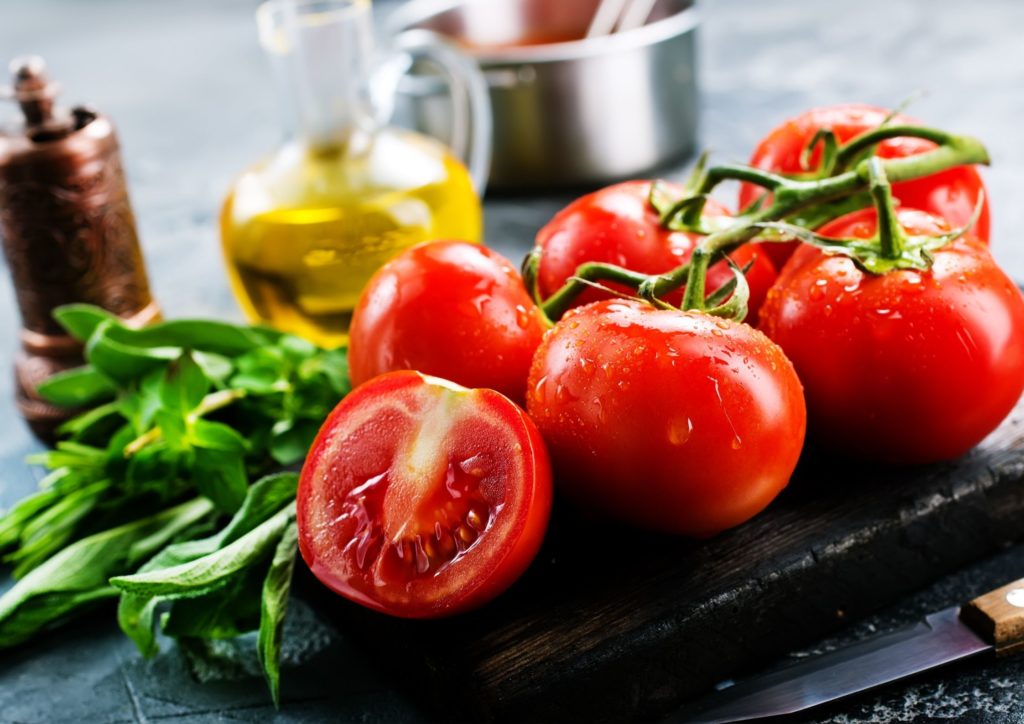
Making Tomato paste from fresh tomatoes requires a lot of patience. For me, the best part of this process is picking healthy fresh tomatoes. You need one whole Tomato to make one tablespoon of tomato paste.
First, cook the tomatoes with olive oil until the skin starts to peel. At this point, take a pulp filter and take out the skin and seeds. Then take the pulp and cook it again.
You will have to strain out all the water by simmering it for hours. When you see the tomato pulp has reduced in half and has become smooth pastelike, your tomato paste is ready.
2. Tomato Sauce
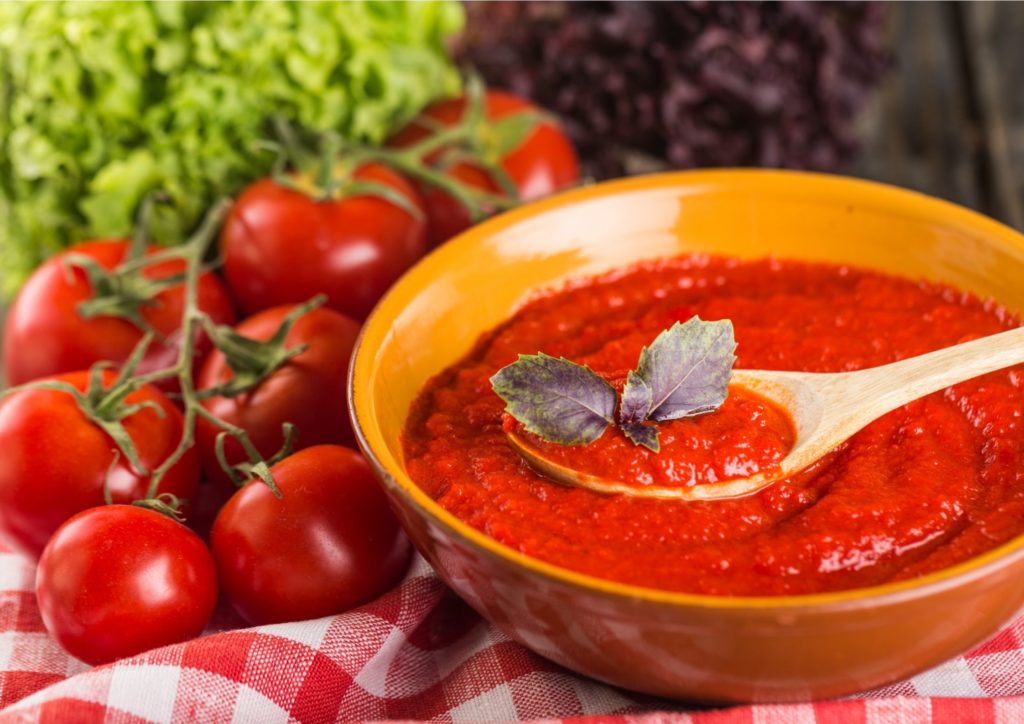
To substitute tomato paste with tomato sauce, you don’t have to follow many steps. It is already smooth and does not have any particles to take out.
However, tomato sauce is a lot thinner in consistency than tomato paste. So simmer it down to a dense texture like tomato paste.
If you are using a store-bought tomato sauce, you have to choose a brand that adds no herbs, spices, or any other component in their tomato sauce.
Because if you use a spiced-up tomato sauce, the flavor of the original dish might get altered.
3. Tomato Puree
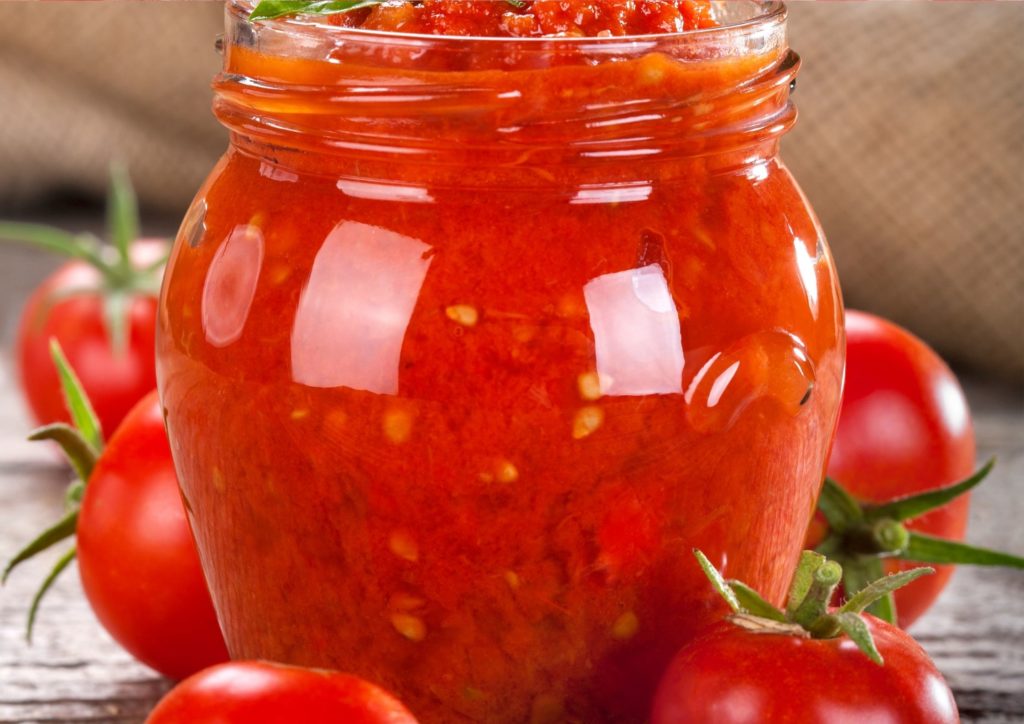
Tomato puree is also a popular substitute for tomato paste. It is readily available and not hard to work with as tomato skin and seeds are already strained out of puree.
So just like a tomato sauce, you have to thicken the consistency to make it as thick as a paste.
I keep homemade tomato puree in the pantry but use readymade canned puree if you don’t have the time.
For example, to make one can of tomato paste, you will need two cans of tomato puree. Also, only buy non-spiced pure tomato puree to keep the flavor of the recipe intact.
If you can’t find the above substitute or want to experiment with something, try these non-tomato-based substitutes for tomato paste.
4. Red Bell Pepper
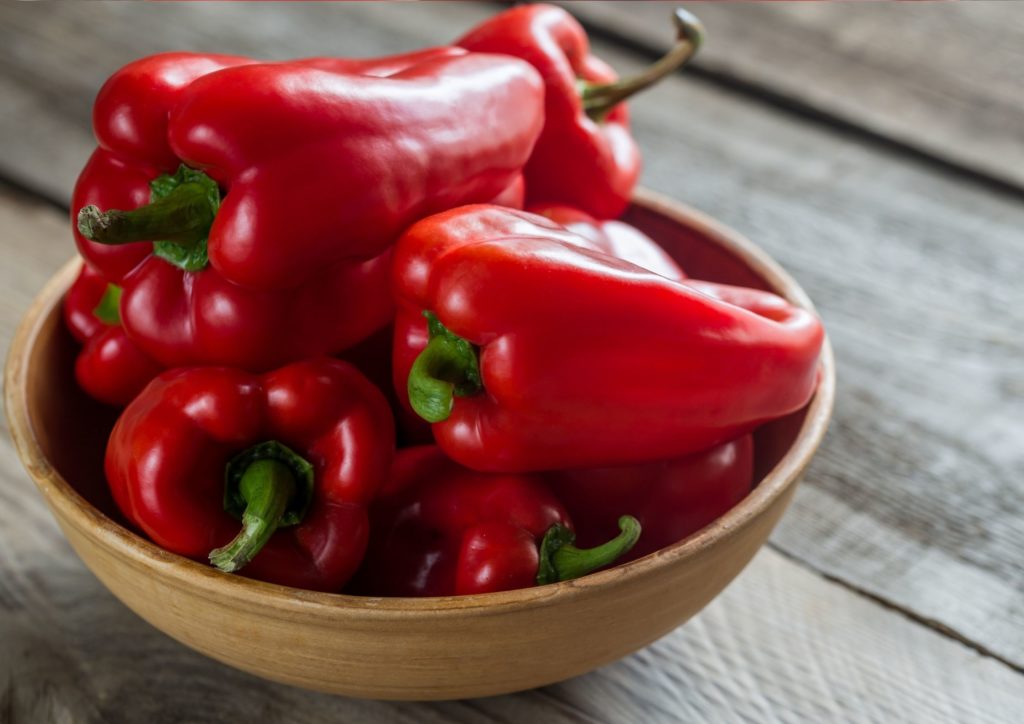
Red bell paper can work well for recipes where you need tomato paste to add color and texture to your dish.
However, it can not provide the acidic taste like tomatoes. You can either use fresh red pepper or pureed red bell pepper, whichever is available.
To use pureed red bell pepper, you need to make it thicker by cooking it on low flame. And if you are using fresh ones, roast the red pepper and take out the skin and seeds. Then put them in a blender to make it smooth.
Now you have to cook it until it’s half in quantity. This paste can work as an excellent thickener, but don’t use it if you aim for tomatoes’ tangy, acidic taste in your recipe.
5. Cornstarch & Red Wine
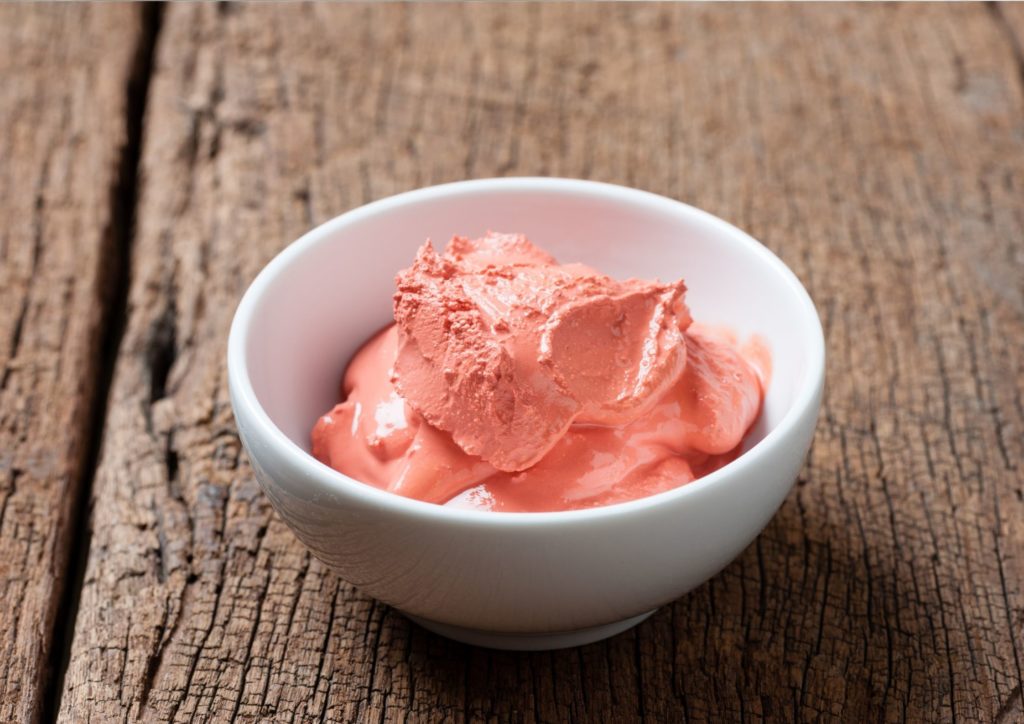
Cornstarch and red wine together can take care of both texture and an acidic taste in your recipe. In addition, cornstarch is a famous thickening agent around the globe.
Now, if you want to mimic the effect of tomato paste, mix one tablespoon of red wine for every tablespoon of cornstarch.
This paste will give you similar results as tomato paste. The only thing you have to ensure is, don’t make it too liquidy. Mimic the consistency of a paste while you are adding red wine to the cornstarch.
6. Pumpkin Puree

Pumpkin puree is the most nutritious option of all the tomato paste substitutes on this list. You can make it at home or buy canned puree and thicken it as per your need. It is a perfect healthy thickening replacement for tomato paste.
It has a sweetness and texture like tomato paste. To add tartness to the flavor, 1 or 2 tablespoons of vinegar is enough.
Pumpkin puree is also helpful if you are allergic to tomatoes or any other nightshade vegetable.
7. Soy Sauce
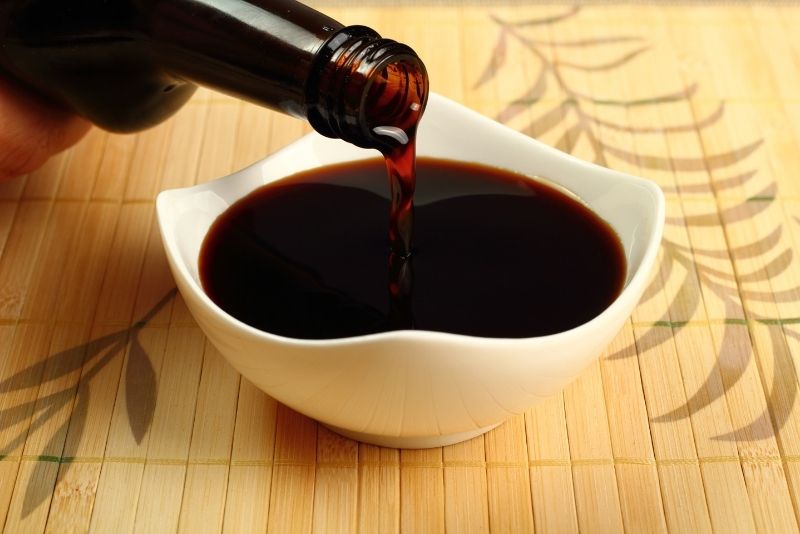
Soy sauce is a tastemaker for many dishes. You can replace tomato paste with soy sauce in recipes that require taste enhancement.
For example, you can substitute one tablespoon of tomato paste with one tablespoon of soy sauce. It can add a mild sour and acidic flavor.
Naturally, you can not make a paste out of soy sauce, and the consistency is too thin. Also, soy sauce is a deal-breaker for recipes where tomato paste adds texture to the dish.
And soy sauce I also more salty and does not have any sweetness. So use it in a limited quantity and add more only if required.
What Does Tomato Paste Taste Like?
A pure tomato paste without any added component has tangy, mildly sweet, and acidic flavors. Tomatoes are highly compressed to make a concentrated paste form, so the flavors are more prominent.
The more you thicken the paste, the more impactful tomato paste becomes. To get a regular paste, you need one Tomato per one tablespoon of paste.
You can also find double concentrated tomato paste in the market. To make the double concentration, use 1 and ½ to 2 tomatoes for one tablespoon of tomato paste.
Tomato Paste Uses
Tomato paste is used in countless delicious recipes like pizza, lasagna, pasta, soups, sauces, curries, gravies, marinating meat and fish, and many more. The primary uses of tomato paste are:
- Tomato paste is widely used as a thickener in many dishes. Because of its dense texture, it can give the consistency of the dish a fair boost. Therefore, tomato paste is often recommended To avoid any unhealthy or unnatural thickener.
- The balance of sour-sweet-tart in tomato paste is prominent and perfect. If your recipe needs a tangy and acidic hint, tomato paste is the right match.
- Tomato paste adds a delicious red color in many cuisines that make it too tempting not to eat. I mean, can you imagine a red sauce pasta without the tangy twist?
Tomato Paste Benefits
Tomato paste is not only a supporting character in your dish; it adds nutrition to your diet. Some of its health benefits are:
- Tomato paste is a vital source of Lycopene. Lycopene helps reduce the effects of UV-rays, risks of cardiovascular diseases and also aids digestion.
- For your weight loss goals adding tomato paste to your diet is recommended as it has a low calorie and fat count.
- Tomato paste contains small amounts of vitamin C, E, K, A, B3, Folate, etc., and minerals like copper, potassium, iron, manganese, selenium, etc. By adding tomato paste to our diet, we can benefit from these vitamins and minerals.
Tomato Paste Side Effects
If you have any allergies related to tomatoes or similar vegetables, consuming tomato paste can cause intense symptoms as it is a very concentrated form of tomatoes.
However, if you don’t have any allergies, tomato paste does not have any proven side effects on the body.
If you are using store-bought tomato paste, ensure it is a pure taste, and no added components are there on the label.
Common Queries about Tomato Paste:
How to Make Your Tomato Paste
To make tomato paste at home, I use ripe and perfectly red tomatoes and olive oil.
- Chop and mash the tomatoes before you start cooking them.
- You can either take out the skin and seeds before you start to simmer or after cooking it for some time. If you take out the skin and seeds before cooking, you can avoid any mild bitterness that it might add. And if you keep them for the first round of cooking, you will get a thicker consistency as the skin releases pectin while cooking it.
- Put some olive oil in the pot, pour the tomato mash into it, and start cooking on a low flame. If you are using an oven, keep the temperature low.
- If you keep the skin and seeds, take a pulp strainer and strain it in baking paper once the skin starts to peel.
- After you have done that, start to simmer again until reduced to half the quantity.
- You can stop cooking once you see a pastelike dense and smooth texture.
- Cool it before you put it in a jar and refrigerate.
- Pick proper ripe and red tomatoes to achieve the authentic tomato paste color.
Homemade vs Store-Bought Tomato Paste
Well, you can use either one for your recipe. I like to make tomato paste at home, as I can control what goes into it and how much density I need. You can easily follow the steps I mentioned before and make pure tomato paste at home.
However, it is a time-consuming process. Making tomato paste from scratch can take hours. And if you don’t have that much time, you can quickly get a tomato paste can or tube from a grocery store or online pantry stores.
While choosing a brand, look for the ones that offer a pure tomato paste. Added seasoning or any other substance can reduce the health benefits and affect your recipe’s taste.
How To Store Tomato Paste
- Tomato paste can not take on much heat and might go bad within a few days without refrigerating or freezing.
- If you are making tomato paste at home, cool it before putting it in an airtight container.
- You can refrigerate it. To extend the lifespan more, freeze it in an airtight jar or container.
- Frozen tomato paste has a store-span of 1 to 1 ½ months.
I don’t think I can ever get over the tangy taste that tomato paste adds to my recipes.
Whenever I was out of tomato paste, I have experimented with all the tomato paste substitutes I have mentioned today.
One of my favorites is pumpkin puree and vinegar. Sometimes even if I do have tomato paste, I use pumpkin puree in the food preparation. It is healthier than tomatoes, and I can serve it to my friend who has tomatoes-related allergies.
Try out the tomato paste substitutes, and tell me which one is your favorite in the comments. You can also give suggestions about future ingredients I should write about.
